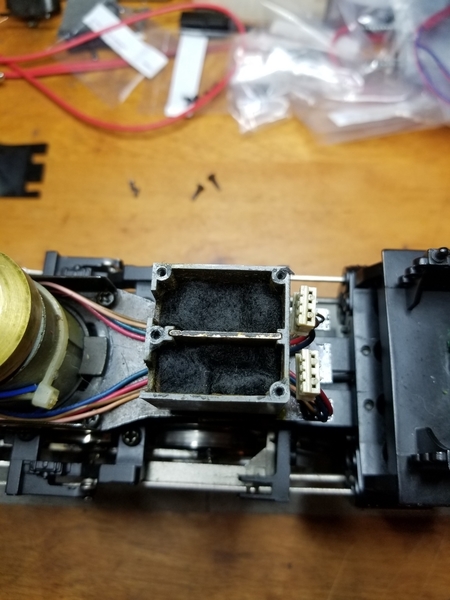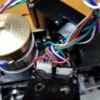I'm trying out a different material for my smoke batting. I've tried the official Lionel batting and the tiki torch wick materials. Both of which char on me in less then a month if I'm using the smoke a lot. I thought to myself there has got to be something better, so I started searching for a different type of material that could be used. I searched the forms, google (again) and only found the above mentioned and the pink insulation one, which I didn't try. So I went looking for a materiel that didn't burn and could absorb liquid. I found this Flame Protector which is normally used for soldering plumbing in tight spaces so you don't burn the surroundings. It feels like a felt like material and I was skeptical at first. I tired some tests on it before installing it in an engine. I saturated some Lionel batting and tiki torch wick and a small portion of this with some smoke fluid. I then tried to light them on fire, the first two burned right away in a big flame and were then just ashes within seconds. The flame protector just took the heat and didn't burn, it then started creating smoke like it you would expect if it was in an engine and after continued heat didn't char at all. I then installed some in a engine and it was smoking normally. I ran the engine with the smoke on high for over an hour and it smoked correctly and then opened it up to check the batting. There was no charring.
So now I'm asking myself why no one has used or tried this type of material before. The only reasons I can think of are:
It will burst into flames inside my engine at some point.
It will ruin my smoke unit in some manner.
It's toxic.
Since it's a burn proof material I don't see the first one being the case. Since it doesn't char it's not ruining my resistors (like the other ones do). Somehow this is more toxic than just vaporizing mineral oil.
I'm looking to see what everyone here thinks. Thanks!
















